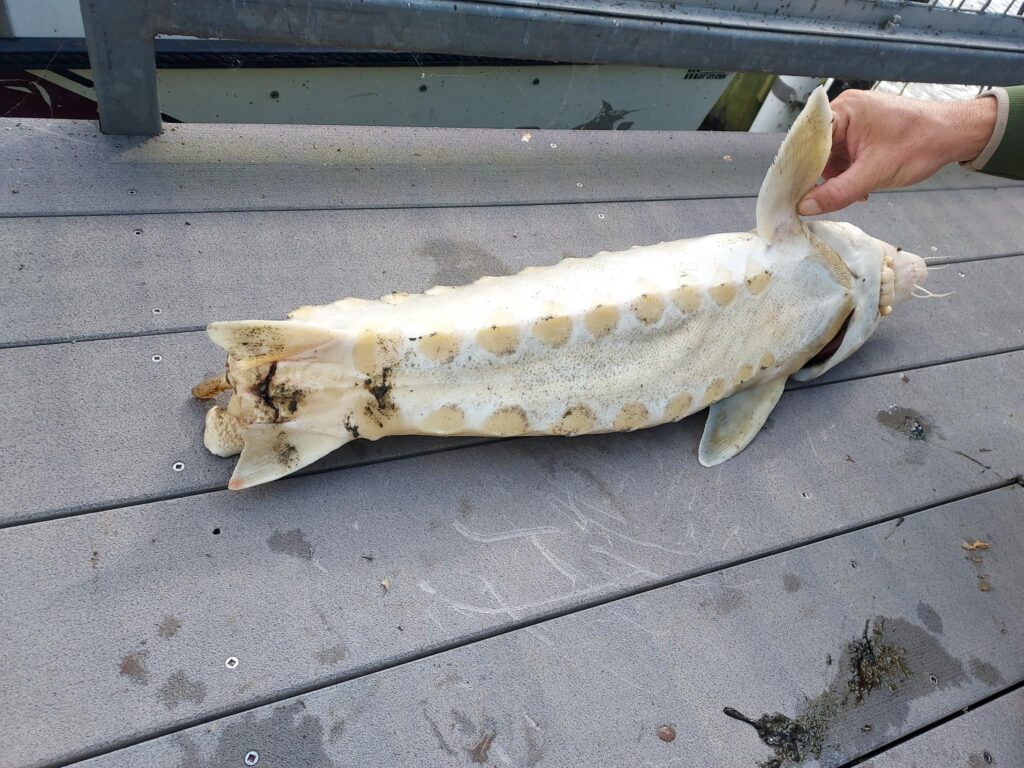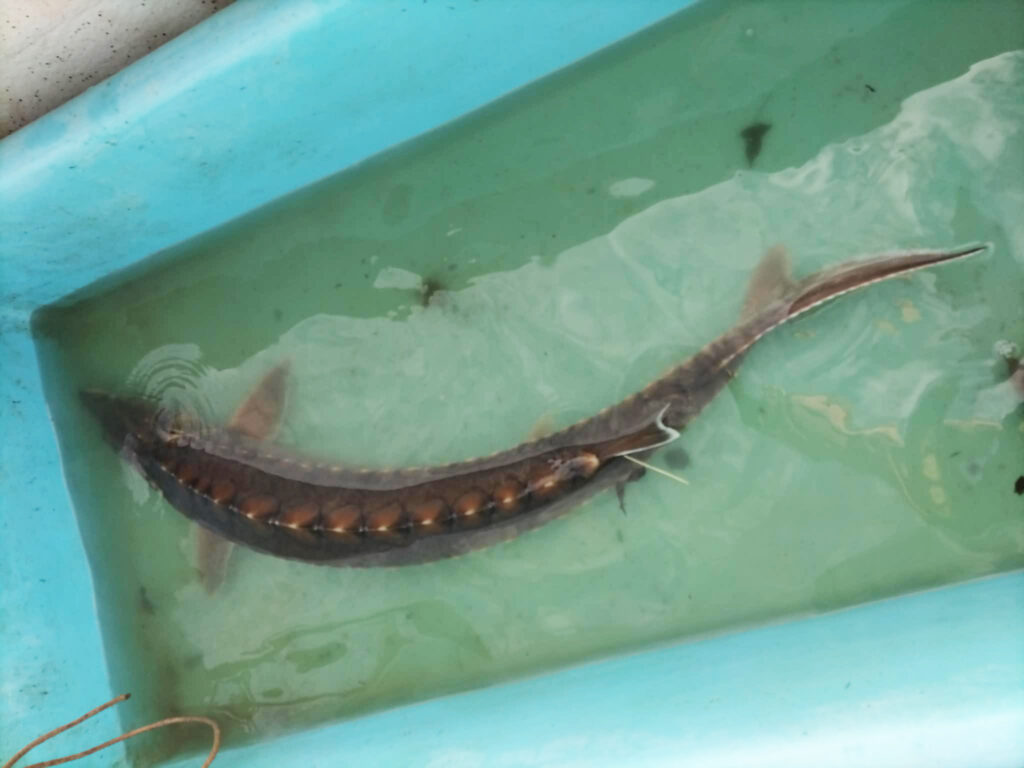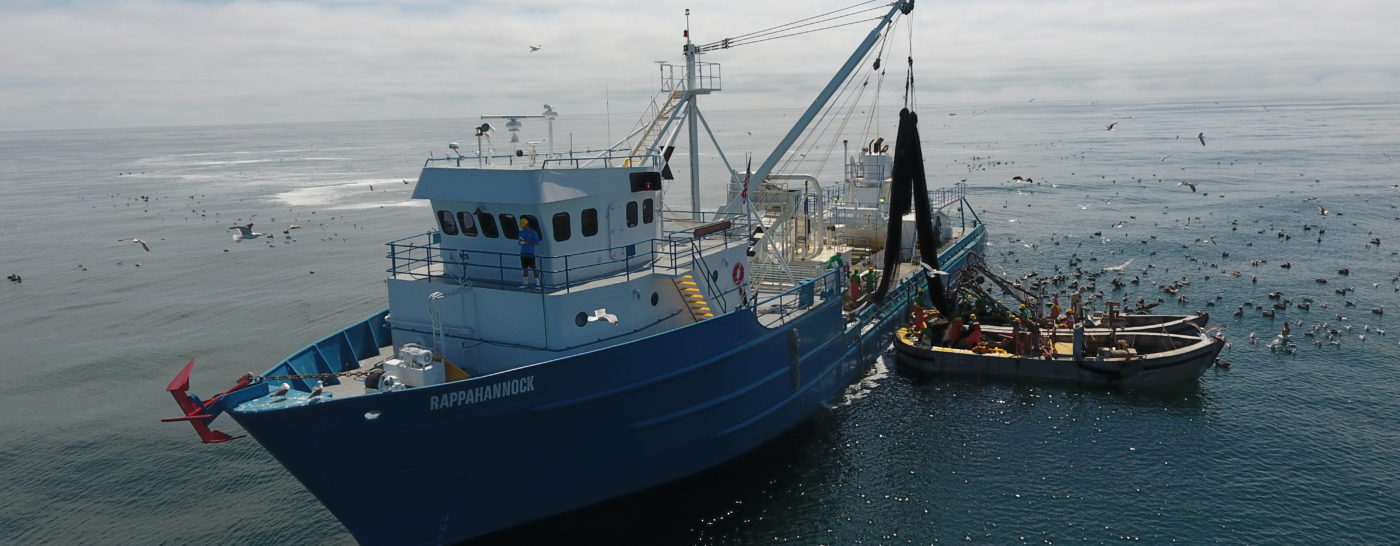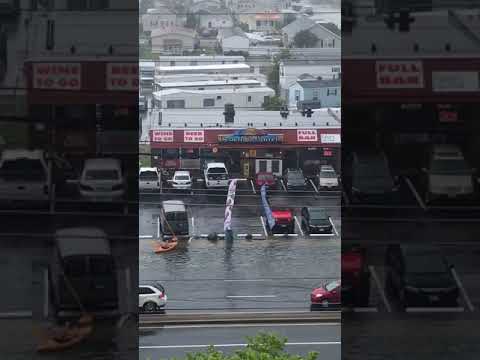Early 2024 will mark 20 years since the first evidence came to light that Endangered Atlantic sturgeon, believed to be wiped out in the James River, were still spawning there.
The Rice Rivers Center at Virginia Commonwealth University (VCU)has been keeping a close eye on the river’s stock of these “living fossils”, which haven’t changed much since they swam around in the time of the dinosaurs.
As the 2023 fall spawning run wraps up, Chesapeake Bay Magazine talked with the Center’s sturgeon expert Dr. Matt Balazik about a concerning trend that parallels a larger issue with endangered whales along the Atlantic coast: vessel strikes. In Balazik’s latest update from Nov. 4, he notes, “Lots of ship
strikes are being reported.”
Researchers count on citizen scientists to gather information about possible vessel strike victims they find and even salvage the fish carcass for study. Balazik says, “Data suggest that relatively there are a lot of carcasses floating around right now so please keep a lookout and report your discoveries.”

The ship strikes on adult (spawning age) sturgeon have been concerns for years. The James has considerable traffic, from U.S. Navy vessels around Hampton Roads to bulk carriers visiting Hopewell and multiple tugs pushing barges as far up as the Richmond Intermediate Terminal. While sturgeon hug the bottom when at rest and feeding, they swim 4-5 meters (13-16’) deep, just about the depth of many vessels’ large, powerful, slow-turning propellers.
Odd as it may seem, the VCU team has been placing ultrasonic tags in carcasses to see how they drift, in order to begin assessing how many sturgeon get hit each year. It’s a difficult research problem, but it’s important to gain mortality insight about a fish that can spawn for decades—unless its life is cut short.
VCU has implanted more than 200 ultrasonic tags on sturgeon during a catch and release process. The ultrasonic markers “talk” for up to ten years each to several coordinated arrays of receivers up and down the Atlantic coast. Researchers caught a sturgeon this fall that was tagged on Oct. 11, 2013. They say the battery in his tag should die any day now.
Next, the VCU tea will start the juvenile sturgeon trawl, but aren’t expecting a strong year due to low rainfall and river flow and high salinity.
Under a new collaboration with the Nature Conservancy, researchers will be able to tag 10 subadult James River sturgeon. At 20-40″ long, these “teenager” fish are older than the young-of-year juveniles but not fully mature either.
“We haven’t focused on this size fish in the James for some time now and are happy to be
back at it,” the Rice River Center noted in their latest update. “We ended up with three during a few days of sampling and all three have 10-year telemetry tags. It’s always exciting to see where these fish will end up spawning.”
Watermen have known for years that subadults hang out at certain times of year in the Lower James’s Burwell’s Bay, but Balazik says they also go on a sort of “walkabout” up and down not only the Chesapeake and its rivers but also the whole Atlantic coast.
Tagged sturgeon that travel off the coast may offer insight into how offshore wind energy development affects their migrations. “You don’t know what the data will show,” Balazik tells us. “We just try to interpret what we find.”
Balazik notes that an online education outreach tool is coming within the year to show the public the Rice Rivers Center’s Atlantic sturgeon data from 2013 up to the present. There is potential for teachers to use sturgeon research into their curricula, with interest building already.
There is also potential for schools, clubs, and interested citizens to ‘adopt” an individual tagged sturgeon and follow it through the VCU research. Anyone who would like to hear more should contact Dr. Matt Balazik at [email protected].
-John Page Williams




